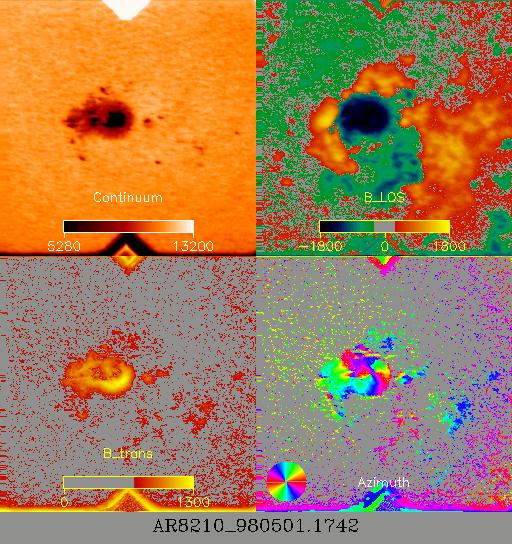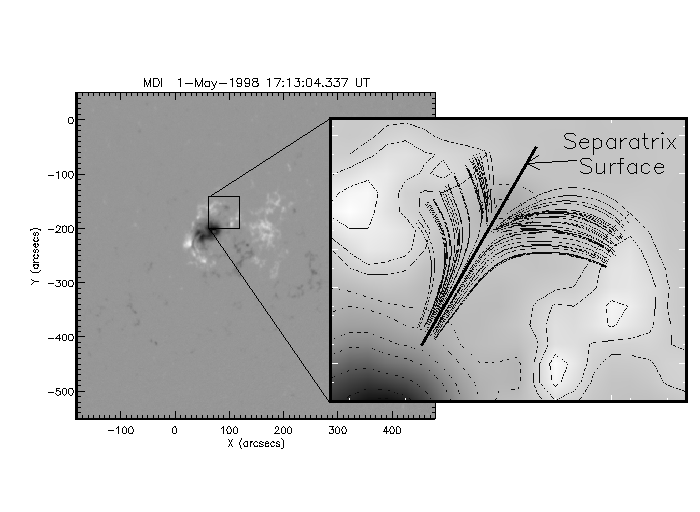 |
 |
Science Notes from the MSU MURI Team
|
|
It is not possible to measure directly the Sun's magnetic field in the corona, so we build 3D models based on specific physical models (e.g., force free fields) and observations of magnetic fields in the Sun's photosphere, where we can measure them. In the framework of the MURI project, we will build such models to study the evolution of active regions and understand the mechanisms which give rise to solar eruptions. |
 |
Before starting satatistical studies, we have decided to do one or more case studies to increase our awareness of possible mechanisms of solar eruptions. We diligently surveyed many data sources, to determine which eruptions were well observed both in the low corona and in the interplanetary medium near Earth. This nugget introduces the first active region we chose, NOAA AR 8210, in which a well-observed eruption occurred on May 1, 1998. |
 |
The morphology of solar flares can sometimes be explained by appealing to the process of magnetic reconnection at topologically significant locations: separatrices and separators. Tools developed by the MSU MURI team allow the application of these models to complicated magnetic field geometries typical of solar flares. |

|
Our first nonlinear force-free (nlff) reconstruction of active region 8210 (AR8210) was made for a field-of-view of 120"x120". But as we discussed during the last MURI meeting held in Berkeley, this restricted field-of-view is not adequate to understand the entire magnetic configuration of AR8210: the field-of-view should be at least 3 times larger. We have done this. How is it useful? Does it change our idea on the mechanism of the flare? |

|
Using a time series of 15 averaged vector magnetograms and their associated 3D coronal nonlinear force-free fields, we study the evolution in time of AR 8210. In particular we focus our study on the changes in connectivity associated with photospheric motions as the sunspot rotation and a moving emerging polarity. The relevance of photospheric motions is shown by studying the energetics of the active region and the injection of energy by transverse photospheric motions. |